This post may contain affiliate links. See my disclosure policy.
Browse the rice aisle and you’ll probably leave more confused than when you arrived. With so many options and varieties, it’s normal to think –What Are The Different Types of Rice? And how do I know when to use each one? In this post, I’ll share a list of the most popular rice varieties, their differences, and which ones to keep stocked away in your pantry.

There are More Than 40,000 Varieties of Rice
Rice is one of our most important food sources. An integral part of Asian and Indian cuisine, rice has spread across the entire globe to fit among all cultures and cuisines. Used as a side to soak up delicious curry and gravy, to the filling of a burrito, rice is often the main star of some of our most beloved dishes from paella to shrimp risotto to jambalaya.
136,000 varieties of cultivated rice and wild rice species are currently stored at the International Rice Gene Bank. (source) Classified by genetics, color, thickness, grain length, stickiness, aroma, method of growing, etc. researchers from all over the world gather here to study, develop, and collaborate and learn about rice.
Despite such an enormous number, the most popular and widely grown rice variety for human consumption is Asian rice, Oryza sativa (with more than 40,000 varieties). Asian rice has two major subspecies, indica and japonica. Distinguished by length and stickiness, indica rice is long-grain and not sticky while japonica is short-grained and sticky (aka glutinous).
Types of indica rice include basmati rice and jasmine rice while examples (cultivars) of japonica rice include arborio rice and Calrose rice, among others.
In this post I’ll be sharing the most popular types of rice you are likely to find at your local supermarket. But first, let’s go over their most important defining characteristics.
RELATED: How to Cook Perfect Rice on the Stove
What is Rice?
Rice, just like other grains, is the edible seed of a grass. We are most familiar with rice that comes from Oryza sativa, or Asian rice. Each grain, or seed, of rice contains:
- A tough outer hull – also known as the husk, the hull needs to be removed before it can be eaten. The hull is removed in all types of rice.
- Bran – An additional layer that lies just under the hull, the bran layer is only removed in certain types of rice varieties, such as white rice. The bran is the nutritious, whole-grain section of a rice grain and though it is typically brownish-tan in color, it may also be red or black depending on the pigmentation in the bran layers.
- Endosperm (also known simply as white rice) – What remains once the outer hull and bran layers are stripped away. Though this is the most commonly consumed part of rice, it is also the least nutritious.
- Germ – Found under the hull, the germ is not a layer, but a small kernel. It is nutrient-dense and packed full of B vitamins, minerals, proteins, and contributes to the overall color of rice. In general, the white rice we purchase from our local supermarket or grocery store has been milled or stripped of the hull, bran, and germ, leaving behind just the endosperm.
The Three Main Types of Rice
Long-Grain Rice
Long-grain rice has a length that is at least three to five times its width. The two most popular and well-known long-grain rice varieties are basmati and jasmine rice. When prepared properly (always thoroughly rinse your rice in several changes of clean water), long-grain rice should cook up fluffy, tender, and the least bit clumpy.
- Popular varieties: Basmati and Jasmine
RELATED: Basmati Rice vs. Jasmine Rice: What’s the Difference?
Medium-Grain Rice
Medium-Grain rice falls somewhere between long-grain and short-grain, or glutinous, rice. The line between medium-grain versus short-grain isn’t always clearly defined, and sometimes, medium- and short-grain rice get combined into the same category (I know, not confusing at all). In any case, you’ll find medium-grain rice to be shorter than long-grain rice, approximately two to three times longer than it is wide but less starchy than short-grain rice. Medium-grain rice is usually fluffy and moist just after cooking, but clumps and solidifies as it cools. It creates a creamy consistency ideal for butternut squash risotto and rice pudding.
- Popular varieties: Italian rice including Arborio, Carnaroli, and Vialone Nano, Calrose rice
Short-Grain Rice
Short-grain rice is round, chubby, and starchy that swell and stick together in clumps. Often referred to as glutinous thanks to its glue-like or sticky texture, short-grain rice is best eaten with chopsticks – or even your hands – and is often found in sweet desserts, sticky rice, and sushi. SHort-grain glutinous rice is commonly used to make Congee (Chinese Rice Porridge), Arroz Caldo (Filipino Chicken and Rice Porridge), and Thai Mango Sticky Rice Recipe (Khao Niaow Ma Muang).
- Popular varieties: Japanese short-grain, Bomba rice, Chinese black rice, short-grain glutinous rice
Popular Types of Rice
With so many different types of rice, it’s hard to keep track of them all. Fortunately, we don’t need to. Here’s a list of the most commonly used rice varieties, when you should use them, and delicious recipes to try at home.
1. Basmati Rice
One of the most popular types of long-grain Asian indica rice, basmati was traditionally grown in the foothills of the Himalayas and remains the predominant rice used in Indian and Pakistani cuisine like biryani and kheer. Long and slim, basmati rice may triple in length when cooked. Characterized by its light, nutty flavor, and somewhat floral aroma. It is sometimes recommended to soak basmati rice for 30 minutes before cooking to reduce cooking time by 20% and maintain flavor. Enjoy basmati rice with your favorite chicken curry or use it to make this mushroom pilaf recipe.
- Varieties: white, brown
- Common uses: pilaf, side dish for curry
- Learn How to Cook Basmati Rice (Perfectly!)
2. Jasmine Rice
Like basmati rice, jasmine rice is an incredibly popular long-grain rice variety. Originating in Thailand (which is why you often see jasmine rice paired with Thai food), it is nutty and presently aromatic. And though the grains of jasmine rice are slightly shorter than basmati rice, the two can be used interchangeably. Use jasmine rice to make coconut rice, olive chicken and rice, or this chicken broccoli rice casserole.
- Varieties: white, brown
- Popular uses: as a side for meats, fish, or stir-frys
- Learn How to Cook Jasmine Rice
3. Wild Rice
Interestingly, wild rice is actually a type of grass and not directly related to Asian rice. Grown in shallow water in lakes and slow-flowing steams throughout North America and parts of Canada. Its outer sheath has a very chewy texture with a tender inner grain. and is high in both protein and fiber, wild rice has a low estimated glycemic index of just 16 (source). Wild rice can be used in a variety of recipes in including this wild rice and turmeric broth soup, wild rice salad, and this creamy chicken and wild rice soup recipe.
- Varieties: Northern wild rice, Wild rice, Texas wild rice, and Manchurian wild rice
- Common Uses – side dishes, salads, soups, etc.
READ MORE: What is Wild Rice? and How to Cook Wild Rice
4. Calrose Rice
Calrose is a medium-grain rice variety originating in California, with 80% of the California rice production being that of the Calrose. After cooking, Calrose rice maintains its flavor, softens, and sticks together, making it an excellent option when making sushi or adding to soup and stews.
- Varieties: white, brown
- Common uses: plain or as a side topped with vegetables or protein, fried rice, sushi
5. Japanese Short-Grain Rice (uruchimai 粳米)
Japanese short-grain rice (Uruchimai 粳米), or simple Japanese rice, refers to a short-grain variety of Japonica rice (similar to Calrose rice) characterized by a very unique stickiness and texture. The grains are short, plump, and contain more moisture when cooked, making them stickier than other rice varieties. You use Japanese short-grain rice to make sushi, rice balls or any plain rice to be served with Japanese meals. Japanese short-grain rice (Uruchimai 粳米) is not the same as sushi rice or Japanese glutinous rice (sticky rice). In fact, glutinous rice (mochigome 餅米) is commonly used to make sweets (more on this sweet rice below) and the two, despite their similar characteristics, cannot be used interchangeably.
- Here is the US, Japanese short-grain rice (Uruchimai 粳米) is sometimes labeled as “sushi rice” for clarification
- Common uses: sushi, rice balls, any plain rice to be served with a Japanese meal
- Medium-grain Calrose rice has become a suitable alternative to Japanese rice for things like sushi
6. Sushi Rice
So what is sushi rice? The term “sushi rice”, when used properly, is actually used to describe steamed Japanese short-grain rice (Uruchimai 粳米) flavored with vinegar-based seasonings known as sumeshi (vinegared rice). In other words, it is seasoned Japanese rice (Uruchimai 粳米).
RELATED: Sushi vs. Sashimi: What’s the Difference?
7. Japanese Glutinous (Sticky) Rice
Japanese glutinous rice also referred to as sweet rice, (known as mochigome もち米 or mochi rice) is another popular variety of short-grain Japonica rice. Short, round, and opaque in color, Japanese glutinous rice has an especially low amylose content resulting is rice that is especially chewy, sticky, and sweet when cooked. It is typically used to make mochi and or other sweet treats and is not used to make sushi or rice balls.
- Commonly called: sticky rice, sweet rice, waxy rice
- Note – Japanese glutinous rice is only one type of glutinous rice. However, it is one of the most commonly found glutinous rice varieties here in the US given our affinity for sushi and Japanese sweet treats.
8. Arborio Rice
Arborio rice is a variety of medium- to short-grain rice used to prepare the classic Italian rice dish, risotto, like this easy butternut squash risotto or creamy parmesan risotto recipe with shrimp. It may also be used to make different types of rice pudding recipes. Arborio rice is short, stubby, and oval-shaped with a pearly white exterior, and comes in various sizes. Superfino – the largest grain size – is the most commonly used arborio rice in the United States. Less known for its taste, arborio rice is loved for its creamy texture when cooked – a texture resulting from its high levels of amylopectin.
- Varieties: white, brown
9. Black Rice
First things first, black rice is not wild rice. To learn about wild rice, see above. Black rice, is, however, a type of rice belonging to the species Oryza sativa L. with some varieties being glutinous. Sometimes referred to as forbidden rice, black rice gets its signature color from a pigment called anthocyanin, a potent antioxidant also found in things like blueberries and blackberries (source). Compared to other types of rice, black rice is one of the highest in protein, iron, and almost always comes whole grain (source). Earthy and nutty in flavor, black rice takes approximately one hour to cook.
10. Medium-Grain Brown Rice
I purchased this medium-grain brown rice variety from my local grocery store and decided to include it in this post. Considered a whole grain, the bran and germ in the outer layer of this whole grain rice give it a hearty, chewy, nutty taste and texture.
Learn How to Cook Brown Rice (stovetop) and How to Cook Brown Rice in the Instant Pot
11. Valencia Rice
Valencia rice is a type of short-grain rice grown in Valencia, Spain, and is best known for making paella. Often referred to as Paella Rice, it may be used in other dishes including croquettes, desserts, stuffing, and Arroz con Pollo. There are three well-known types of rice often referred to as Valencia rice: Bahia, Bomba rice, and Senia.
12. Red Rice
Red rice is a variety of rice that looks red in color thanks to its anthocyanin content. Red rice comes with a red husk, rather than the more common brown husk in other varieties of rice, and is typically eaten hulled or partially hulled. It has the highest nutritional value of all rice eaten with the germ intact (source). Red rice comes in long-grain and medium-grain varieties.
- Varieties: Red Cargo Rice (long-grain, non-glutinous), Bhutanese Red Rice (medium-grain, semi-milled, and slightly sticky when cooked)
13. Rice Blends
You may also find multi-colored rice blends combining several popular rice varieties into one deliciously fragrant, nutty, and textured blend. Popular blends often include long-grain brown rice, wild rice, red rice, and black rice. My favorite rice blend is this Lundberg Wild Rice Blend.
14. Parboiled Rice
Last, but not least, we have parboiled rice, also known as converted rice. Parboiled rice is rice that has been partially pre-cooked in its inedible husk before being processed for eating. It is believed that parboiling rice improves texture, storage, and health benefits. There are three main steps to parboiling – soaking, steaming, and drying the rice in its husk after harvest, but before milling. The result is light yellow rice, rather than the characteristic white rice we are accustomed to. Once cooked, parboiled rice is dry and firm.
The Difference Between Brown and White Rice
Brown rice is the less processed version of white rice. Considered a whole grain, brown rice contains all parts of the grain including the fibrous bran, germ, and carb-heavy endosperm. The only part that is removed is the inedible hull of the seed.
White rice, on the other hand, is milled rice with its husk, bran, and germ removed. Removing the husk, bran, and germ not only changes the texture, appearance, and flavor, but it also helps to extend shelf-life. After milling, white rice is polished. A process which ultimately removes even more of its nutrients, but results in a nice and shiny white appearance. Often, though not always, white rice may be enriched with the vital nutrients that were lost during processing including B1, B3, and iron.
Types of Rice to Always Keep in Your Pantry
While the above are the most well-known and common rice varieties, it is unlikely that most of us plan to cook with all 14 types on a regular basis. Below are the varieties I always keep stashed away in my pantry,
- White basmati rice
- White and brown jasmine rice
- Wild Rice
- Arborio rice
- Rice blend
Delicious Rice Recipes,
Easy Red Beans and Rice Recipe
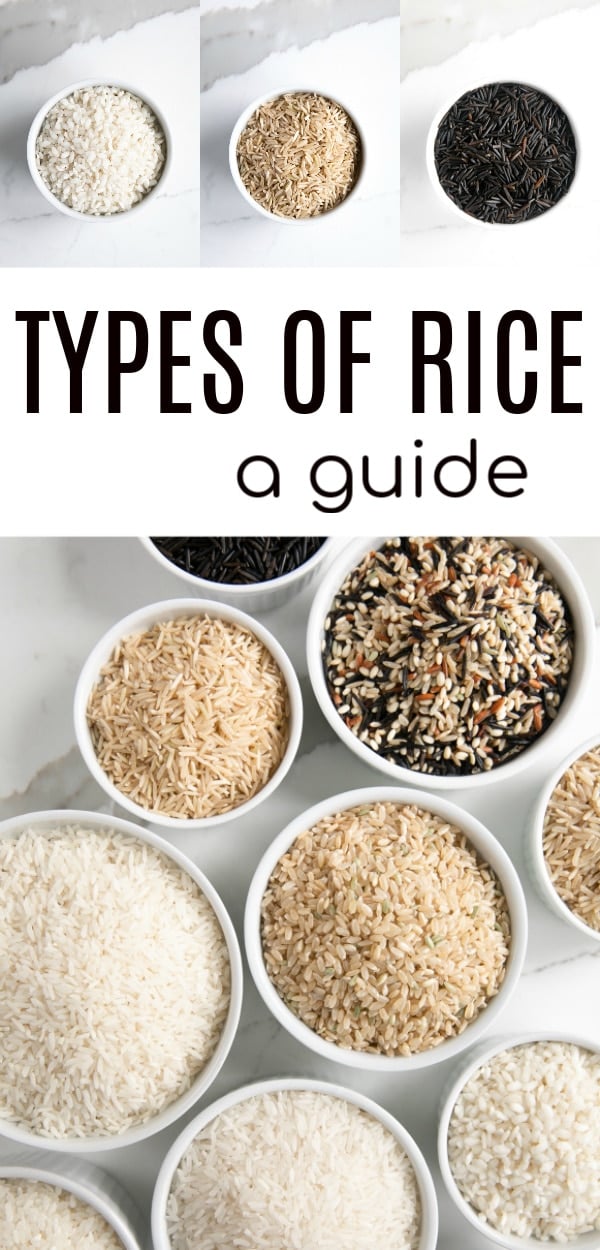
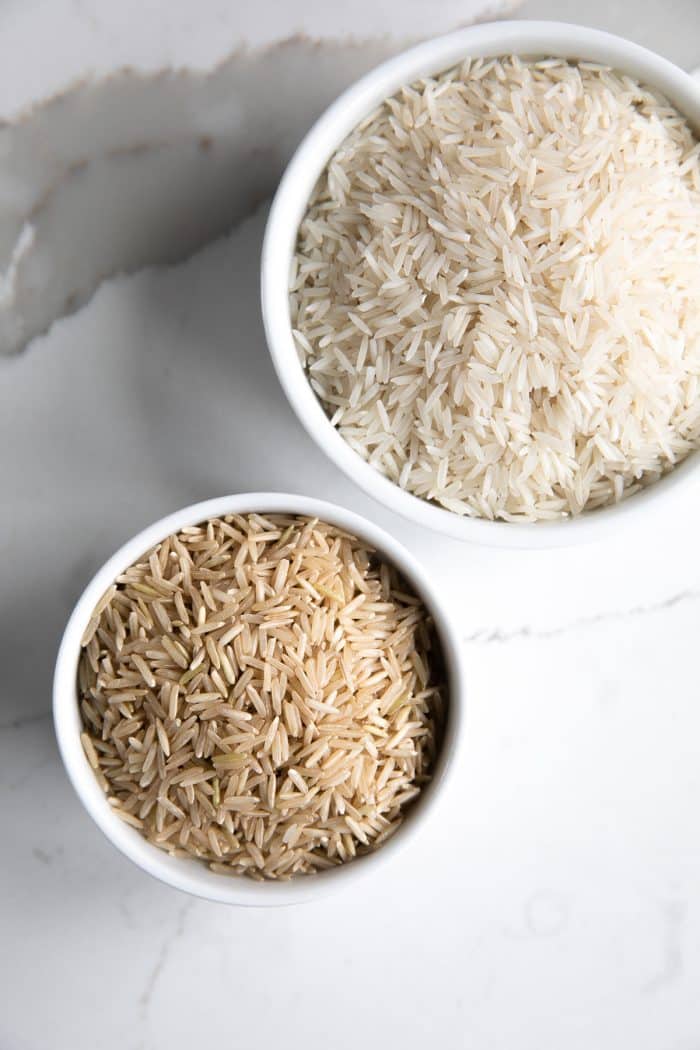
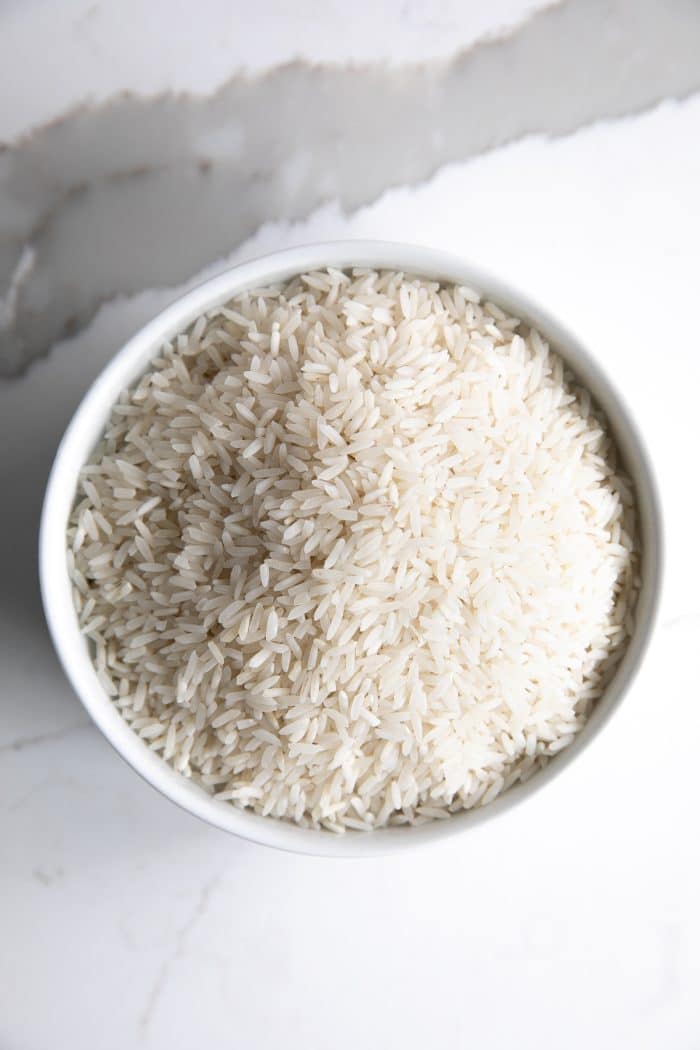
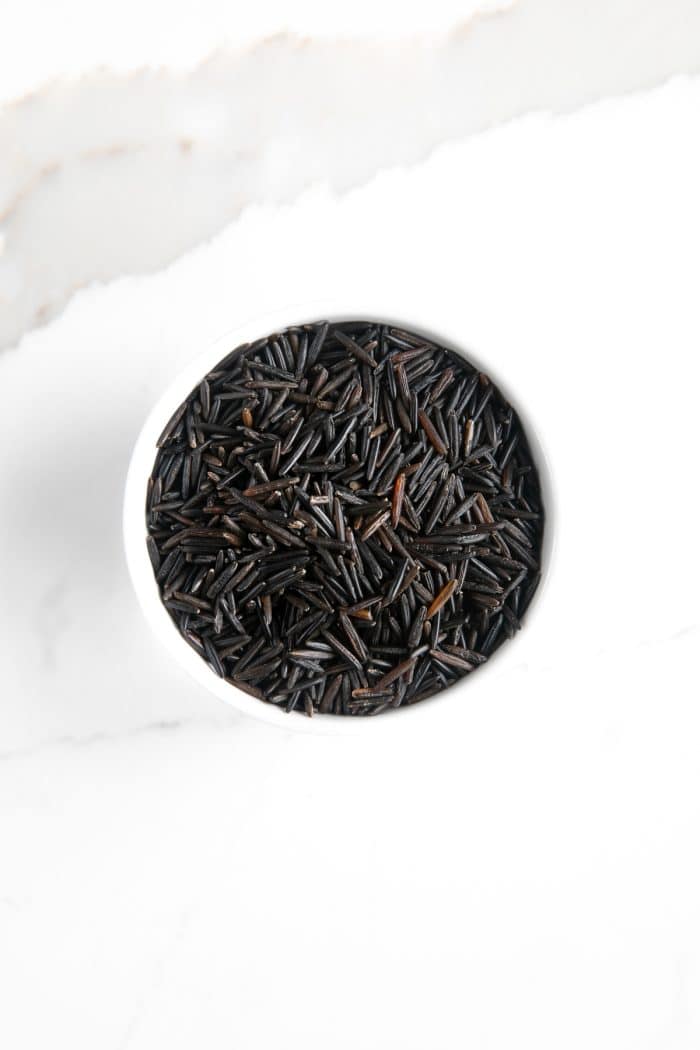
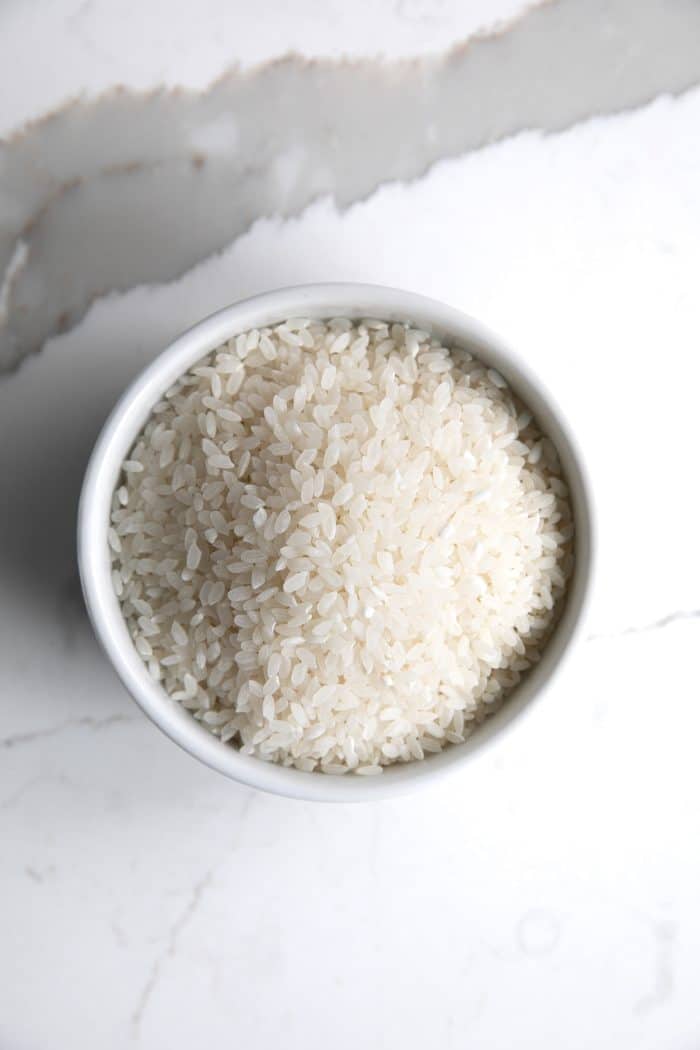
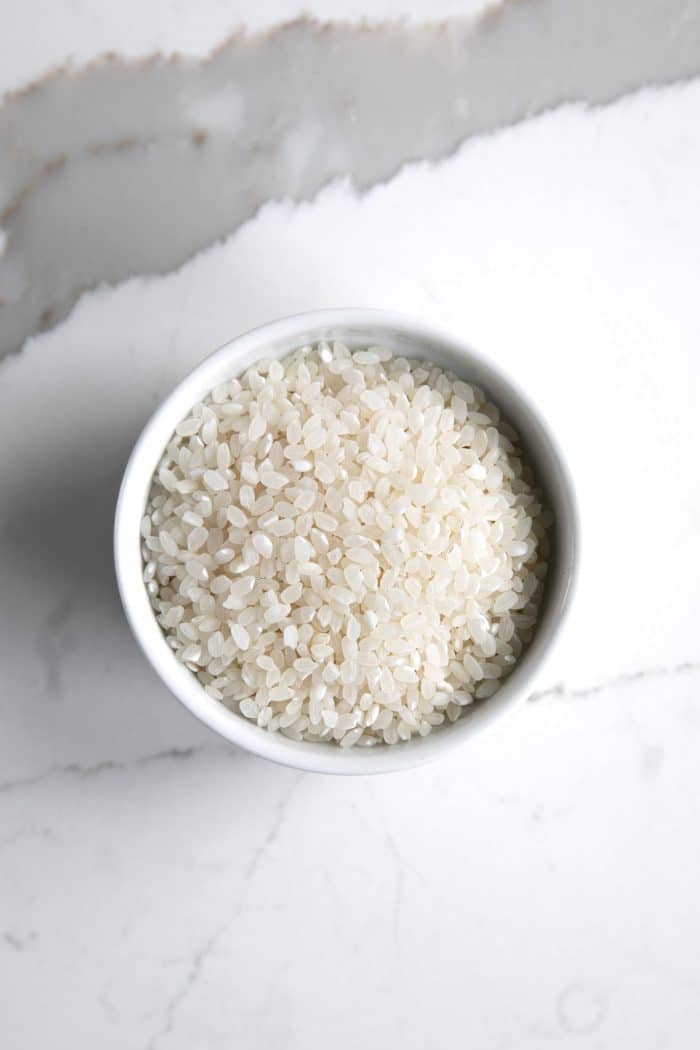


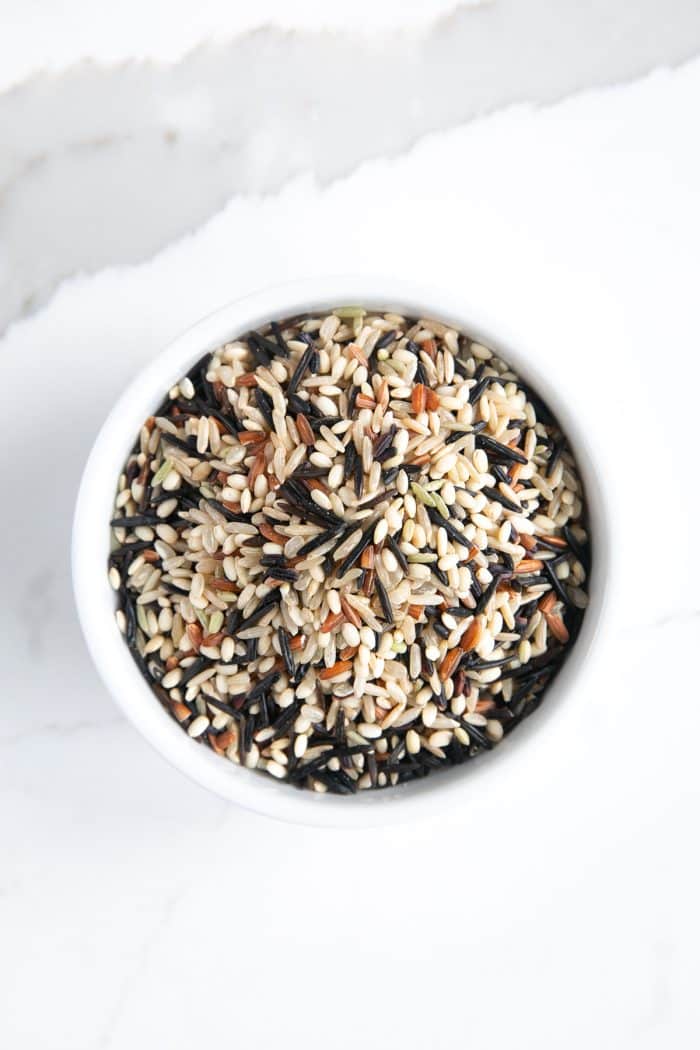
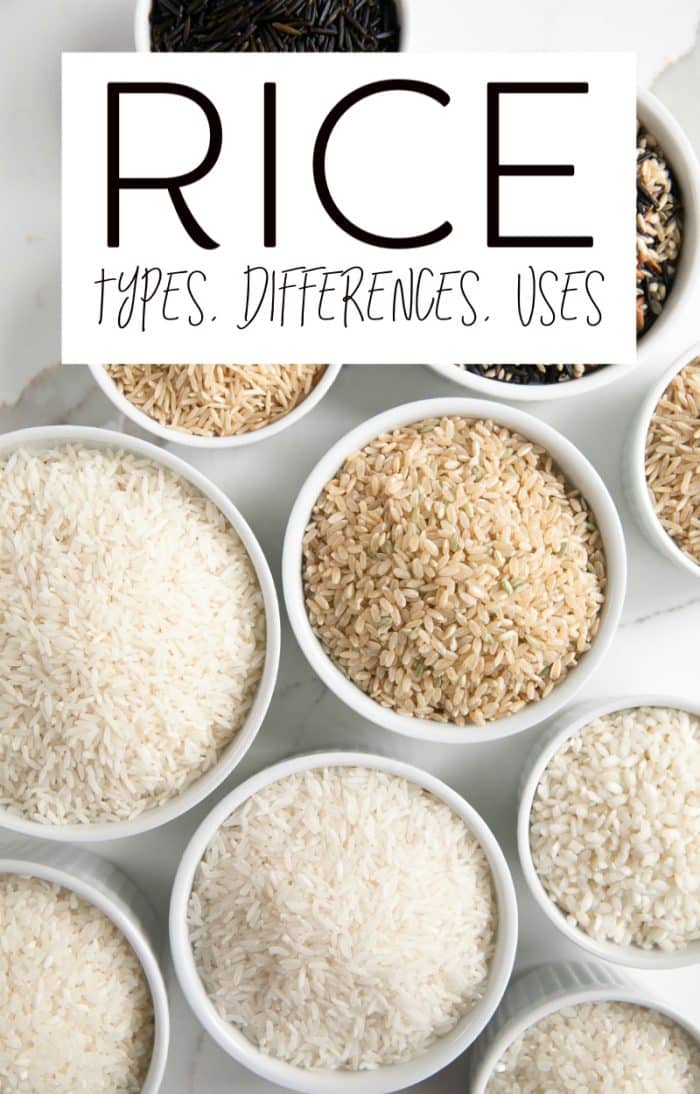
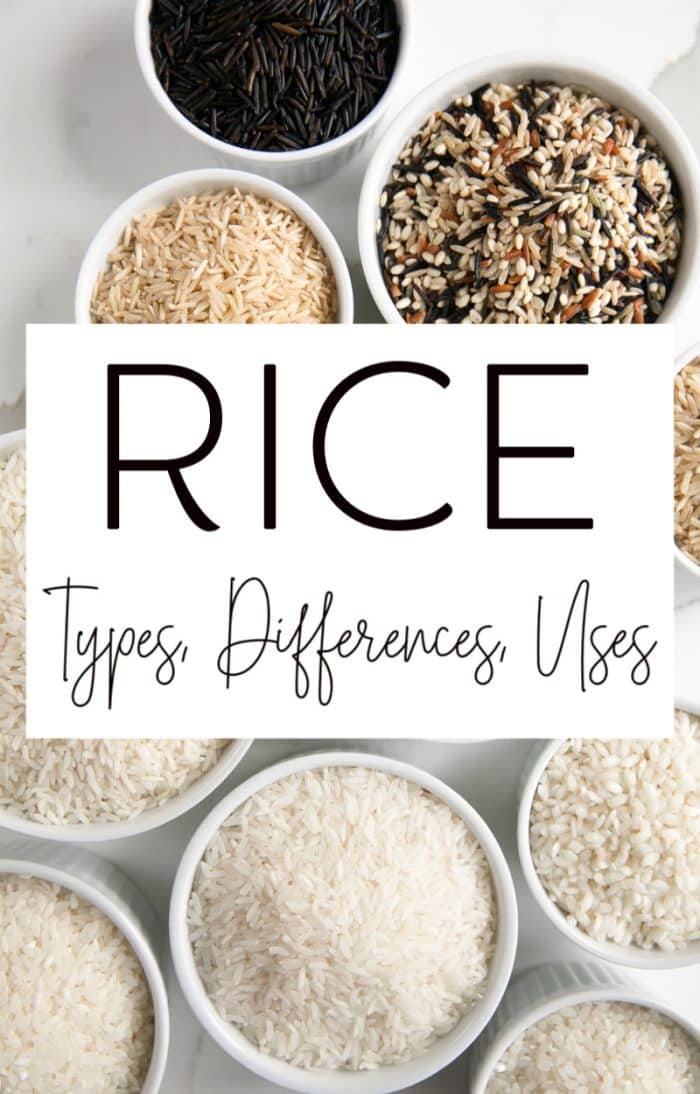
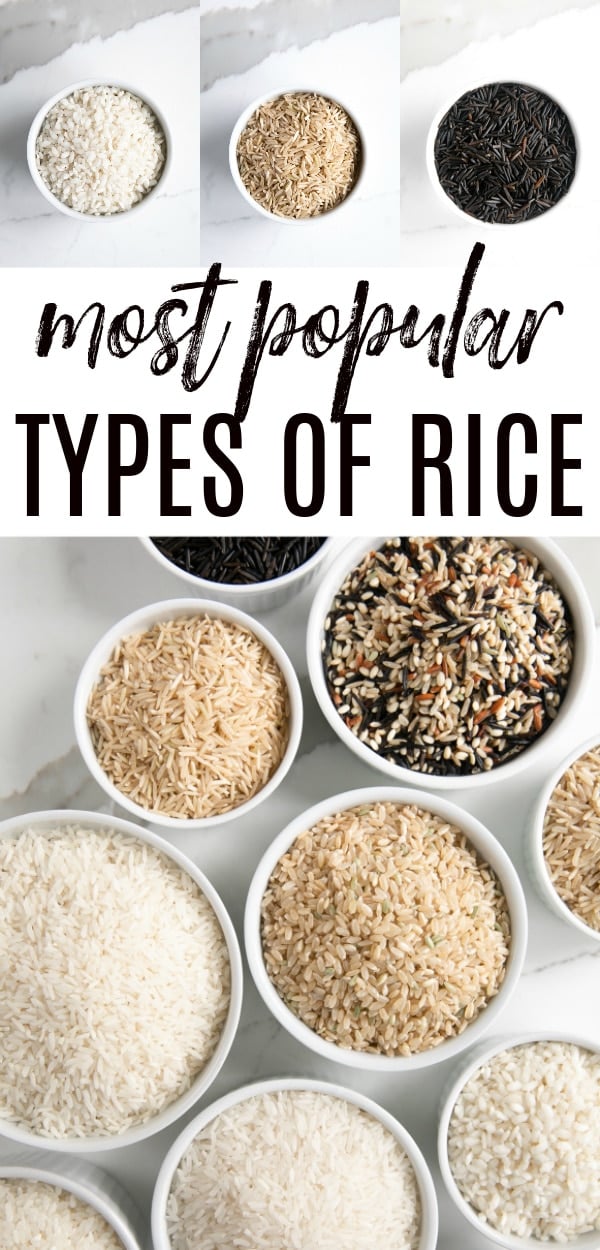
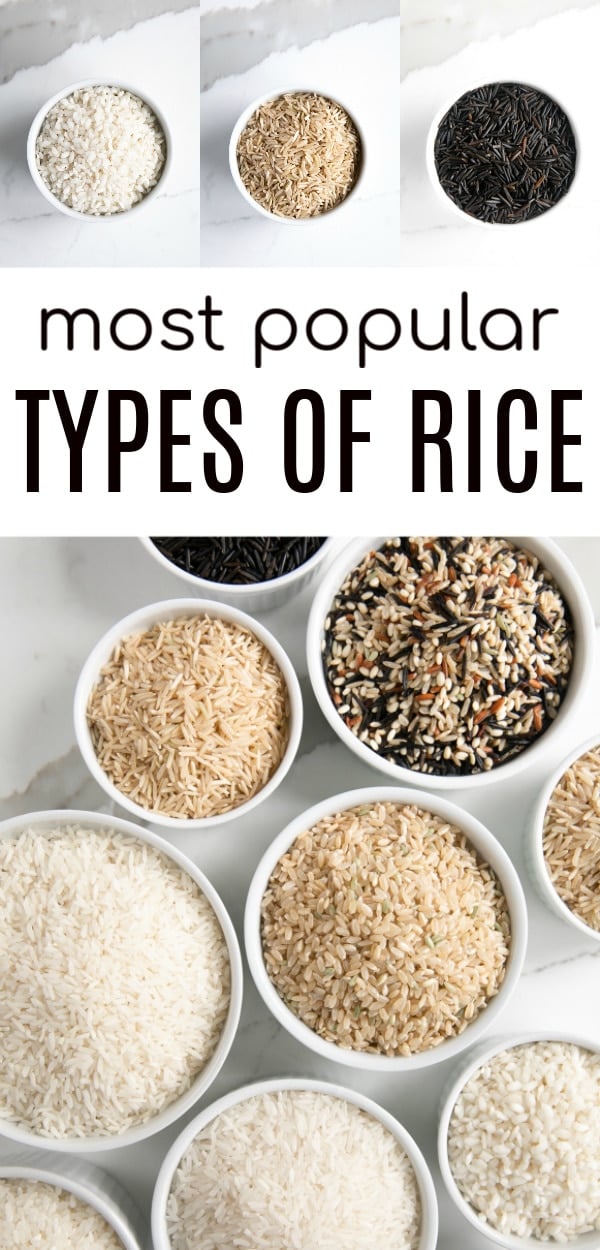

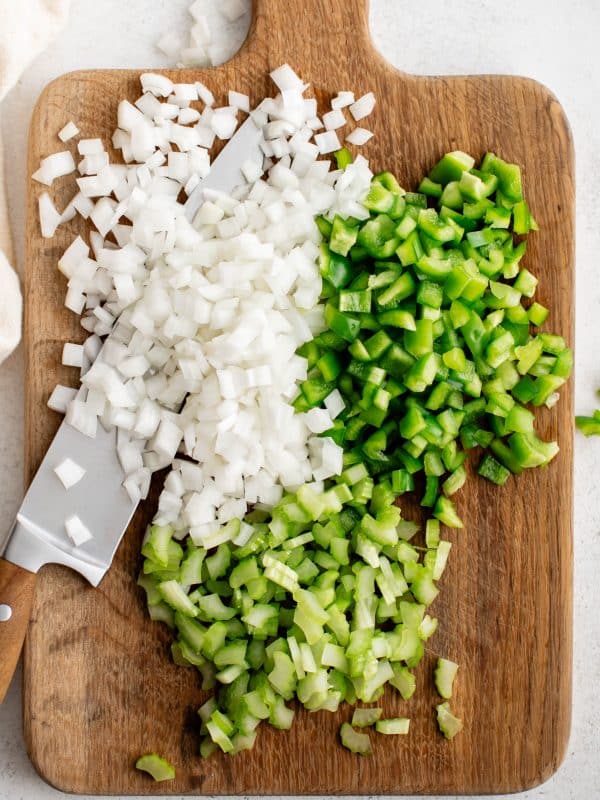
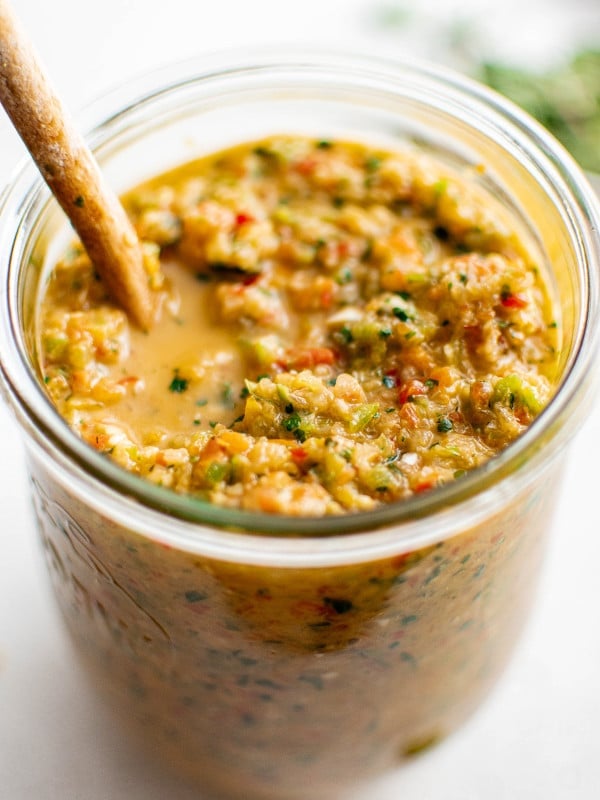

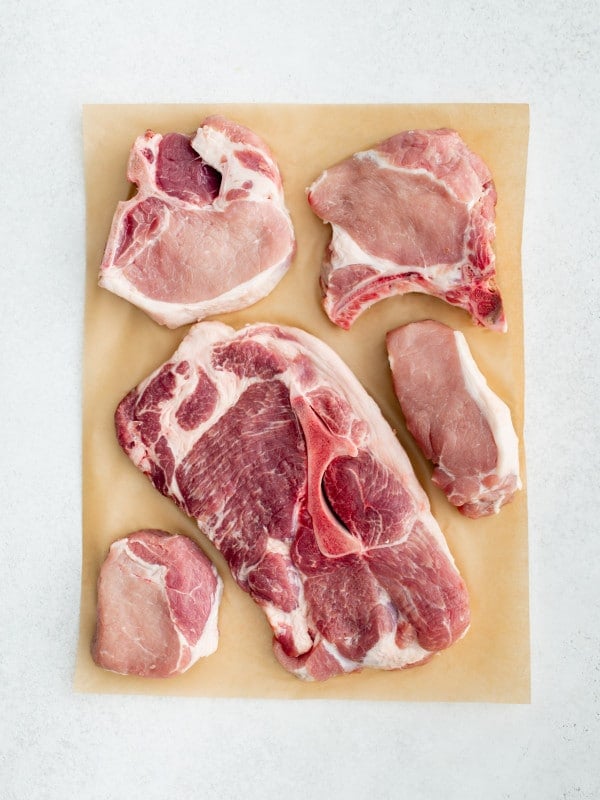








Thanks Jessica, i would really love to get the recipe for health benefit tips on the different types.
Murphy from Nigeria
Brown rice is whole-grain rice that retains the bran and germ layers, making it more nutritious than white rice. It has a nuttier flavor and a chewier texture. Brown rice is a popular choice for health-conscious individuals.
Out of all specifies which one is nutritionally the best? Thank you
Gloria.
Red rice has the highest nutritional value of all rice eaten with the germ intact (source).
Thank you so much for this Miss Jessica! Im making an essay about varieties of rice and this really helped me out! thank you so much<3
Do you know how to make this rice
Which rice? I have many rice recipes, simply click the search icon 🙂
Thanks for putting in all these facts about different rice into one article 😀
Thanks a lot, Jessica.
I’m an English Teacher working in Chile (South America)
teaching food vocabulary to gastronomy students.
It has helped me a lot!
I’ll follow you
Love,
Thanks for the kind feedback Ricardo, I am glad to have helped 🙂